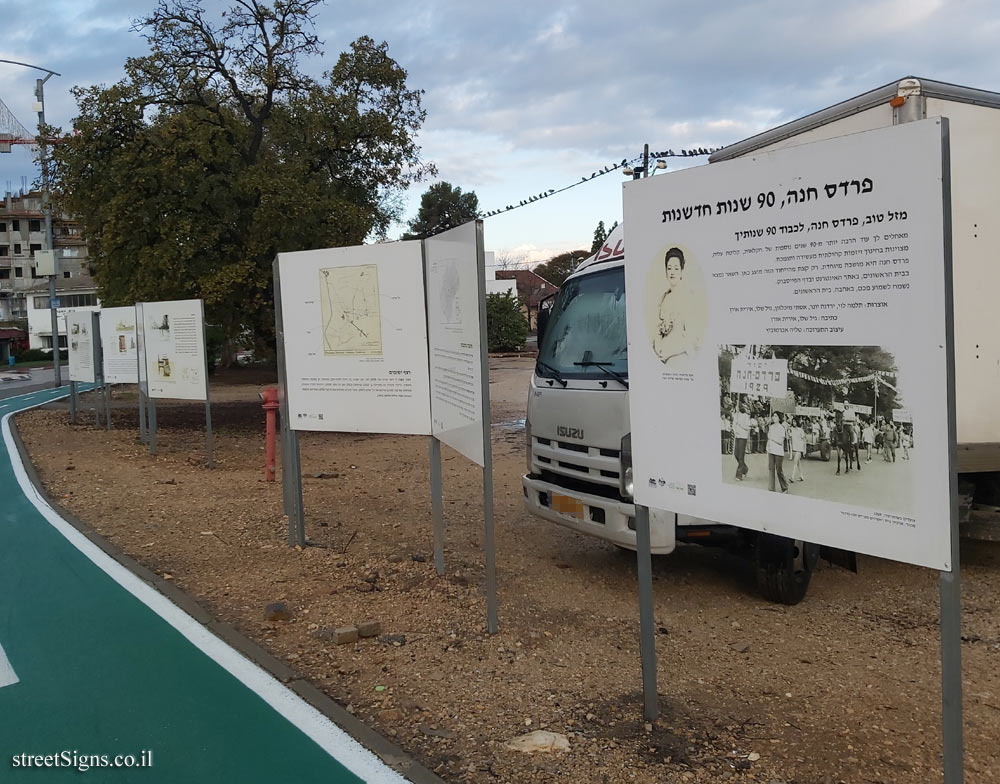Part of the row of signs that were placed on the occasion of the 90th anniversary of Pardes Hanna
The row of signs was photographed that day
 Click for a larger image Translation of the text on the sign
Click for a larger image Translation of the text on the sign:
[Pardes Hanna planning map]
The planning map of Pardes Hanna, as drawn by the engineer Michael Kesselman in 1928
Source: Beit Rishonim Archive in Pardes Hanna-Karkur
You are here
Can you identify the differences between the face of the colony today and the planning :?
A planned colony How did it all start? Pika, the Palestine Jewish Colonization Association, owned by the Rothschild family, decided to establish an orchard colony: it purchased land, appointed urban planning experts, added experienced Baron officials, and began construction according to a master plan.
Where? The area chosen for settlement was called "Ghabie" meaning in Arabic: thick forest, a hint of the oak forest that was here. Remains of these ancient oaks can now be seen, for example not far from here, in Egged Square.
What was the plan? Colony in the spirit of "Garden City": lots of physical, private and public space, low and modest construction, lots of vegetation and shady trees. In 1928 a detailed map of the colony was prepared by the engineer Michael Kesselman. The map shows the main axes in a north-south direction (Hanadiv Street and Dekelim Street), a linear street layout, a concentration of public buildings around the main square and a uniform division of agricultural plots. The first residents of the colony lived between Harishonim Street (Hapoalim neighborhood) and Derech Hanadiv (800th Street), and between Haruvim Street and Derech Hayam.
QR code referring to
The First Founders - The Pardes Hanna-Karkur History Center, Logo of the 50th Anniversary of the Pardes Hanna and Karkur Colonial Union, Logo of the 90th Anniversary of Pardes Hannah, symbol of the Founders House - The Pardes Hanna-Karkur History Center

 Click for a larger image
Click for a larger image